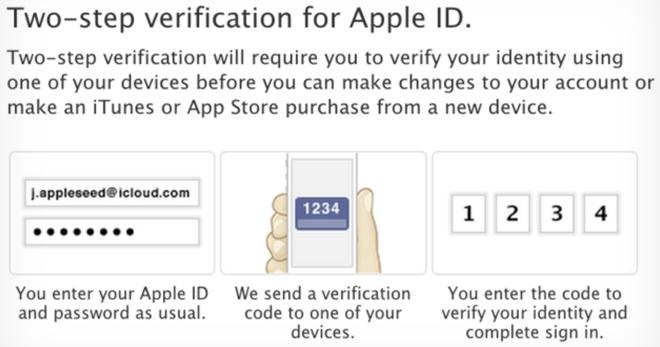Apple continues to expand the range of offerings covered by its two-step verification scheme, with security-conscious users now able to count iMessage and FaceTime among those features protected by the service.
Beginning today, those who have opted in to the two-step verification program will be asked to provide a one-time security code the next time they configure iMessage or FaceTime on a device. The change was first noted by The Guardian.
Existing two-step verification users who are already signed into FaceTime or iMessage on their devices do not need to take any additional steps. Two-step verification is automatically enabled, and will be triggered if users log out and log back in or sign in to their Apple ID on another device.
Apple introduced two-step verification as an opt-in feature in 2013. After enrolling and nominating at least one SMS-capable phone number, users will be asked to enter a one-time passcode whenever they attempt to sign in with their Apple ID on a new device.
Apple expanded two-step verification to iCloud.com last year, and has made it available in 59 countries as of Feb. 5.
 Sam Oliver
Sam Oliver








 Brian Patterson
Brian Patterson
 Charles Martin
Charles Martin


 Malcolm Owen
Malcolm Owen
 William Gallagher
William Gallagher
 Christine McKee
Christine McKee
 Marko Zivkovic
Marko Zivkovic









16 Comments
This is a garbled mess.
If you click on View Account Details in FaceTime or iMessage on the Mac, your usual password won't work. You have to sign out and back in again. Then you have to set up 2-step verification. Even though I already had 2-step verification on my Mac and iOS devices, I had to do it again. Firstly, it gave me a four digit code for the verification. So far, so good. Then, it then gave me a new password for my account, but only for those two apps! What? And it was a computer-generated one that I’ll never remember, though it’s stored in Keychain under an obscure name.
Bizarre, unwieldy and very un-Apple.
Oh, I forgot! Apple doesn't do 'It just works' these days. Got it.
Oh, I forgot! Apple doesn't do 'It just works' these days. Got it.
I 2nd that feeling! Yosemite Continuity is a total mess as well! WAY too many configuration settings that must be exactly correct
Apple should just license TouchID to these poor developers.
[QUOTE name="cali" url="/t/184778/apples-imessage-facetime-now-protected-by-two-step-verification#post_2675316"] Apple should just license TouchID to these poor developers.[/QUOTE] Precisely. I think the whole security setup that Apple uses needs to be overhauled. It’s far too complicated. One password and Touch ID should be all that I need to use for everything; every app, every payment. Merging IDs would be nice, too, though maybe I'm being hasty; it’s only been 14 years or so since people have been requesting this. Bookmark this post, and in 560,000 trillion years, remind Apple to consider merging IDs; maybe they'll have the resources and capability by then.
When I am asked for two step verification on one of my other devices, one device listed is the one I'm using to verify. So, it seems kind of pointless if I can verify on the same device. I thought the point was to use another physical device.